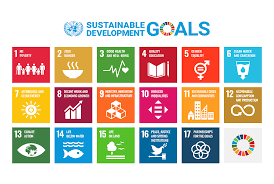War in Gaza: An International Lawyer’s Perspective
Presented by: Leila Nadya Sadat
Sadat is a well-accomplished international lawyer and it was a pleasure to listen to her speak about the war in Gaza and hear a lawyer’s perspective on the issue. Sadat is a Professor of International Criminal Law at the Whitney R. Harris World Law Institute at Washington University School of Law. She served as Special Adviser on Crimes Against Humanity from 2012-2021, published more than 150 articles, essays, and reports, published 10 books in various forms, wrote the world’s first global treaty on crimes against humanity, and so much more while also being a mother. This is all to say, she has a unique perspective on the war so I was excited to listen.
History
Sadat started her presentation by laying down the framework of the presentation: she wanted to establish the legal frameworks of the conflict going forward. Firstly, the War is strictly a property dispute, it is not a religious conflict like many believe. The conflict started way back in 1947 with a partition where Britain handed the UN Palestine and then split the territory in half. This put Jeruslm under international control. Sadat claimed that the war was expected, proven by the general assembly meeting on 09/22/23 where Israeli Prime Minister, Benjamin Netanyahu, held up a map where only Israel existed (Palestine was nonexistent). October 7th, 2023 is the start of escalation in conflict and the start of the war, 202 days had passed by the time she presented. Sadat compared this day to 9/11 for Americans.
After providing a brief background, she turned to the organs of the UN and international organizations that were created to prevent situations like the one in Gaza from arising. At this point, she made a clear distinction on the purpose of the UN. The UN wasn’t created to save people and solve problems, it was created to “avoid hell.” This is to say the UN’s primary role is to prevent conflicts from arising. However, this is difficult when the only UN organ with the power to enforce their decisions and make states comply, the Security Council, doesn’t.
Sadat then moved on to explain the two international courts: the ICJ and the ICC. The ICJ is the International Court of Justice and states cannot be sued without their consent. There have been contentious cases about Palestine, one between the US, another with South Africa, and the last between Nicaragua and Germany. The ICC stands for the International Criminal Court and it hears cases about individuals and other non-state actors. Sadat said, “It puts real people in real jail.” However, states must join the court to be tried. It is similar to a regular court case where the defendant has to be proven guilty beyond a reasonable doubt. The state of Palestine joined the ICC and the court declared in the events of 2014 that both Israel and Palestine committed war crimes. An important characteristic of the international courts is the inability for them to try states and punish them. Sadat made a distinction that after the Nuremberg Trials, only individuals could be tried and punished, not states.
The Way Forward
Sadat claimed for international Law to be effective the laws must apply to everyone, which can only happen when all states respect the law. The system of international law is not working as it should. Attributes that allow for the law to be ineffective, are the abuse of the veto in the security council. ICJ has ordered Israel to take immediate and effective measures to prevent genocide, but they have not seen the efforts necessary by Israel. The ICJ has made multiple requests to Israel, but nothing has improved, and they are starting to get annoyed. Many members of the court want to call for a ceasefire. Sadat concludes her speech by saying the war isn’t about choosing sides, to want a solution is to be pro-human, pro-life, pro-humanity.
Reflection
Sadat’s presentation was different from what I had anticipated. I had expected a more opinionated viewpoint on the state of relations between Palestine and Israel, as well as potential solutions. However, Sadat remained neutral throughout the presentation, focusing on presenting the facts of the case. The presentation primarily provided background information and history, explaining the past relations between the two states and the international institutions that are in place to prevent situations like the War in Gaza. Despite my initial expectations, I appreciated her impartial approach and factual accounts.
You could tell she was hesitant to share her opinion, which is understandable, but I was eager to hear her perspective. For instance, when asked if she thought college protests and encampments actually led to change, she didn’t directly answer. Instead, she talked about understanding the motivation behind protests and mentioned that she personally prefers contacting her representative for policy change. While I appreciate the desire to remain impartial, in a talk like hers, people are interested in her personal views, not a way to avoid controversy. Personally, I doubt that most protests lead to meaningful change. When protests focus on non-state actors like HAMAS or long-standing conflicts like Israel’s, I don’t see them as effective. In my opinion, protests that aim for achievable policy changes at the state or national level can be more successful; most protests calling for international action tend to fall short.



 Rise of Extremism and Regional Politics
Rise of Extremism and Regional Politics



